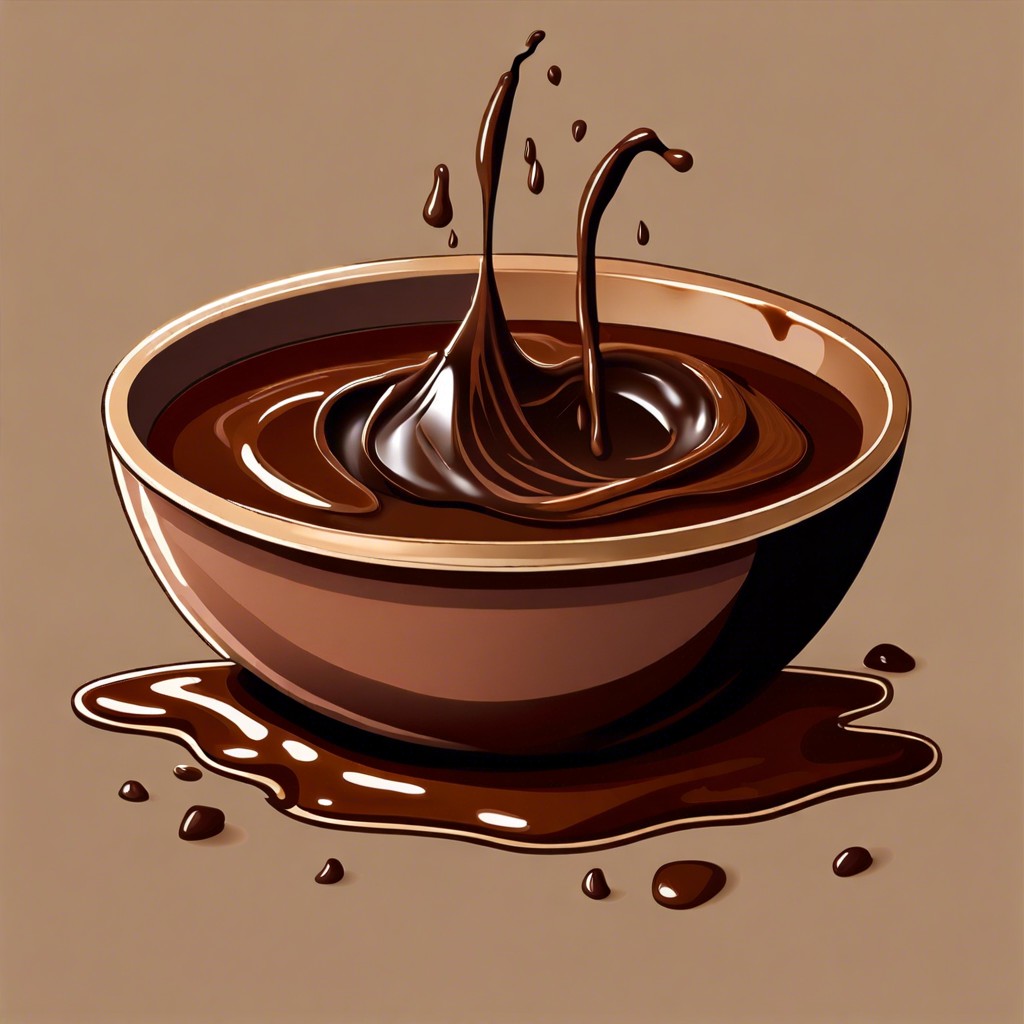Learn how to salvage chocolate that has seized, transforming it back into a smooth and usable state.
Key takeaways:
- Seized chocolate occurs when moisture interacts with melted chocolate.
- Recognize early signs of seizing to salvage the chocolate.
- Fix seized chocolate by adding hot water or warm cream.
- Repurpose seized chocolate for other recipes or use as a glaze.
- Prevent seizing by keeping utensils dry and using low heat.
Inside
Understanding Chocolate Seizing

Chocolate seizing occurs when moisture interacts with melted chocolate, causing it to suddenly turn from a smooth, flowing liquid into a thick, grainy paste. The culprit is usually water, which can come from a variety of unexpected sources like a wet spoon or steam from a double boiler.
The science behind this is straightforward. Chocolate contains cocoa butter, a fat that dislikes water. When water mixes with melted chocolate, it disrupts the fat structure, causing the cocoa particles to clump together rather than remain evenly dispersed.
Recognizing the early signs of seizing is useful. The texture may begin to change, and the glossy sheen will start to dull. If addressed quickly, you can often salvage the chocolate before it becomes completely unusable.
Why Chocolate Seizes
Chocolate seizes when unwanted moisture interacts with it during melting, leading to a gritty, grainy texture. The moisture causes the sugar in chocolate to clump together and harden, disrupting the smooth flow of melted chocolate. This is often a result of steam or water droplets getting into the chocolate, which is surprisingly sensitive to liquid. Even a small amount of water can cause this reaction, turning your smooth, glossy chocolate into a lumpy mess. Keeping all utensils dry and avoiding direct contact with water when melting chocolate helps in maintaining its desired consistency.
How to Fix Seized Chocolate
Once chocolate has seized, it’s not all doom and gloom! There are a couple of ways to salvage it:
First, try adding hot water—yes, water! Add a teaspoon at a time, stirring vigorously after each addition. This might sound counterintuitive since water usually causes seizing, but small amounts can help homogenize the mixture again.
If that doesn’t work, or if you need the chocolate for a sauce or frosting, think about using it as is. Seized chocolate can still work fine in recipes where texture isn’t the star player, like in brownies or chocolate cake.
Another practical recovery method involves adding warm cream. Heat some cream and slowly blend it into the chocolate, stirring continuously. This can bring back some smoothness, making it suitable for dessert toppings or truffles.
Lastly, don’t toss it! Even if it’s past the point of no return for your original recipe, seized chocolate can be repurposed. Melt it down with a bit of oil or butter and use it as a glaze or for chocolate bark. A little creativity goes a long way in the kitchen!
Preventing Seizing
To prevent your chocolate from seizing, attention to detail is key. Start by ensuring all your utensils are completely dry before beginning the melting process. Even a small droplet of water can cause the chocolate to seize.
Use a low heat setting. High temperatures can also lead to seized chocolate because the heat causes the sugar in the chocolate to grab onto any moisture present.
Consider adding a small amount of fat, like butter or vegetable oil, during the melting process. This can help maintain a smooth consistency and prevent the chocolate from clumping together.
Lastly, always melt chocolate slowly and stir it consistently. This consistent motion helps distribute heat evenly and keeps the mixture smooth. In this way, patience really is a virtue when it comes to perfect chocolate melting.
Using the Double Boiler Method
The double boiler method is your best ally in melting chocolate smoothly and preventing it from seizing. Fill the lower part of the boiler with a couple of inches of water and bring it to a simmer. The key is to ensure the bottom of the upper pot doesn’t touch the water, as direct heat can scald the chocolate.
Place finely chopped chocolate in the upper section of the double boiler. This increases the surface area, allowing the chocolate to melt uniformly. Stir gently and consistently using a silicone spatula to promote even heating and prevent hot spots that could cook the chocolate.
Avoid any moisture from getting into the chocolate. Water causes chocolate to seize, turning it grainy and stiff, so keep the pot covered and handle everything with dry utensils. This technique provides gentle heating, which helps in maintaining a silky texture of the melted chocolate.
Related
- What Causes Chocolate to Turn White: Unveiling the Mystery of Fat Bloom
- Does Chocolate Go Bad? Understanding Shelf Life and Storage Tips
- Why Does Chocolate Turn White: Causes and Solutions for Blooming
- How Long Does Chocolate Last? – Prolonging Your Sweet Treat’s Lifespan
- Does Lemon and Chocolate Go Together: Explore The Tasteful Options